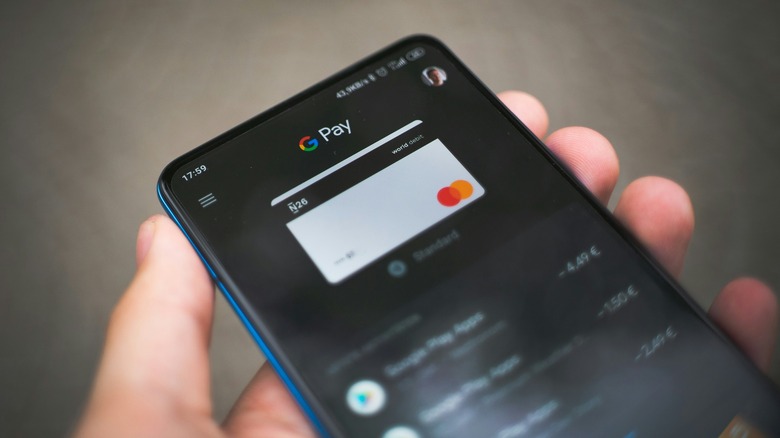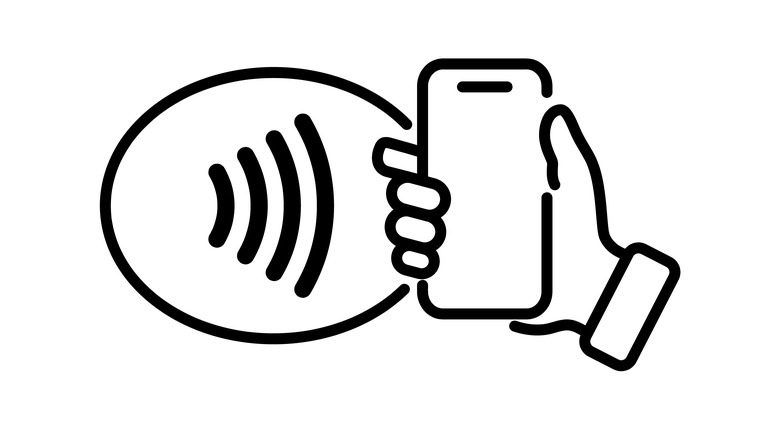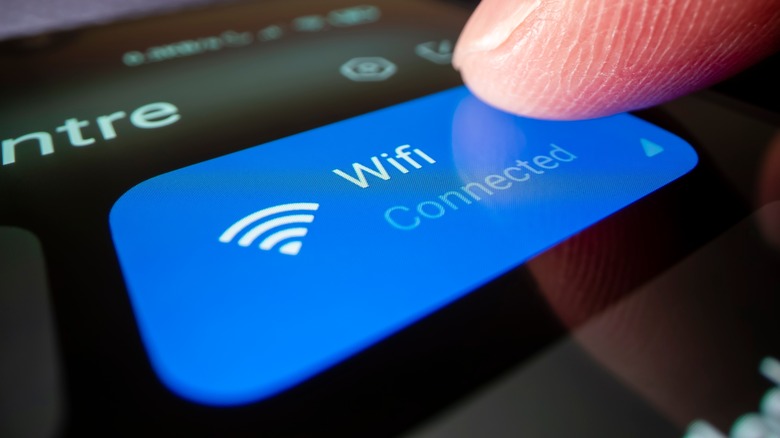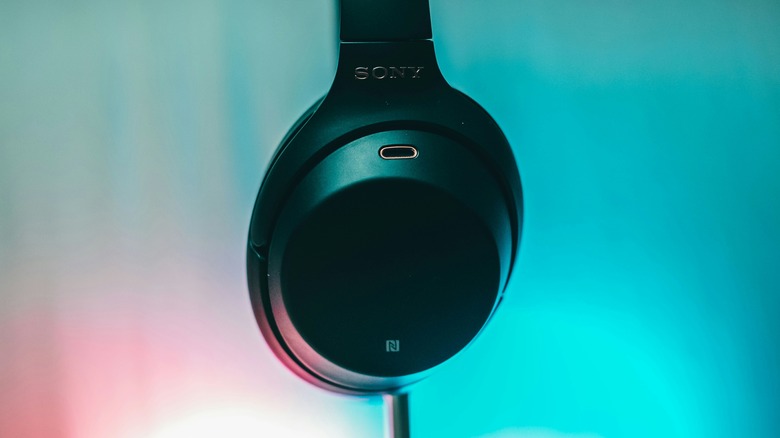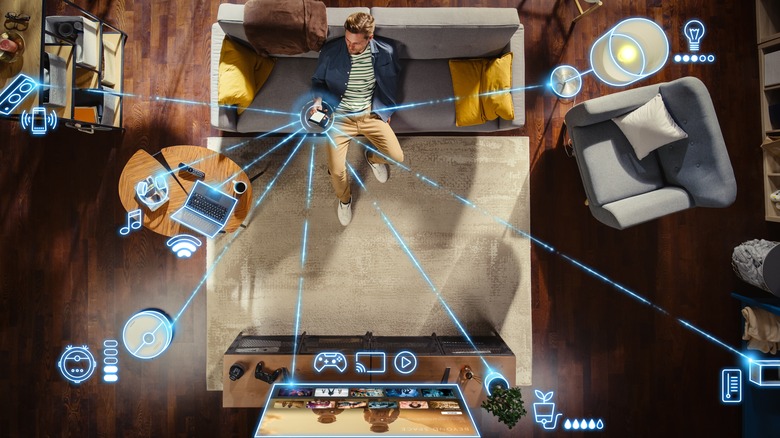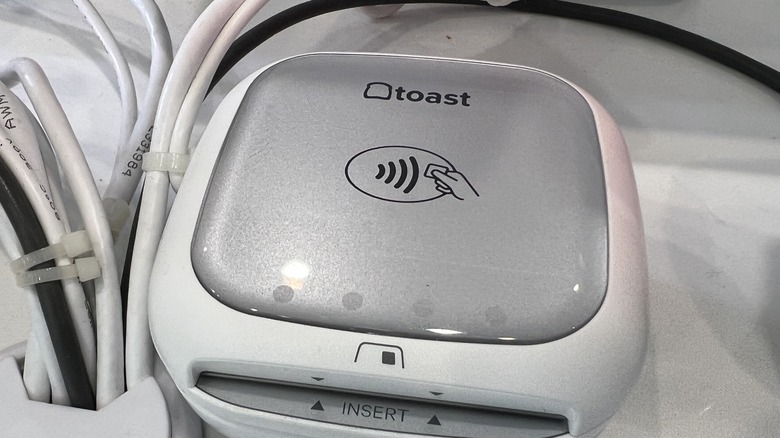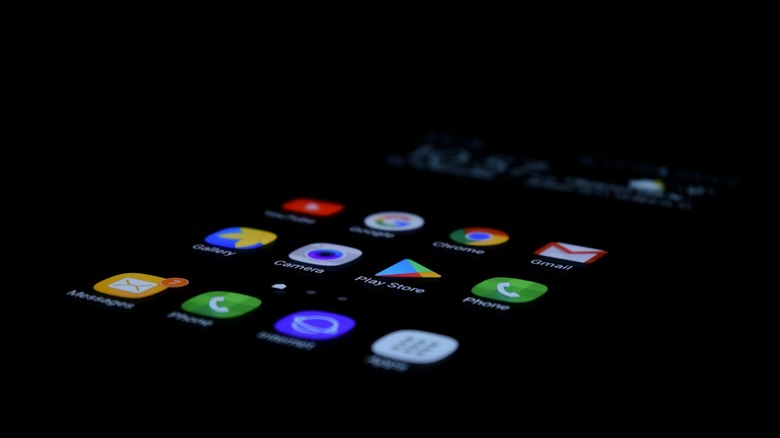What Is NFC On Android & How Can It Make Your Life Easier?
We may receive a commission on purchases made from links.
You may have heard the term NFC before, especially if you're an Android user. Google's mobile operating system has had this hardware feature for over a decade, but many users aren't sure what it does. If you're reading this, however, you can unlock the capabilities of your smartphone, and we're not talking about AI apps. With the power of NFC, life becomes as easy as a single tap.
NFC stands for "near field communication," and it's a technology that allows you to trigger actions on your phone by tapping the back of the device to another NFC-enabled point of contact. Think of it like a digital handshake between your phone and the world around you. It's so simple you may not realize how powerful it can be. NFC can enable complete automation of your phone and smart home, quickly connect you to wireless access points and Bluetooth devices, or even be used in more fun and creative ways to share things with friends. If those things sound useful, then you're in the right place. Keep reading to learn what NFC is and how you can use it to improve your life every day.
What is NFC?
NFC, short for "near-field communication," is a protocol that allows your phone to read information from small copper coils wrapped around a microchip. These are called NFC tags, and they fit into a stamp-sized sticker or other medium, which allows them to be adopted by everything from payment terminals to door locks. If you've ever tapped a fob against a reader to access your apartment building or office, you've likely used NFC before.
The first Android phone with NFC, the Samsung Nexus S, was released in 2010, but the technology predates it, with the first phone to feature NFC being the clunkily named Panasonic P506iC in 2004. It wasn't until 2014 that the iPhone adopted this early 2000s technology, but better late than never. Although it's been around for two decades in mobile phones, NFC only continues to grow its usefulness. Today, most businesses accept NFC payments, as do many mass transit systems like New York City's Metro.
Many Android phones have an NFC reader/writer built-in, which allows the user to tap the back of the phone to another NFC-enabled device, be that a payment terminal, door lock, Bluetooth device, or a simple NFC tag.
Make it easy for guests to use your Wi-Fi
One useful application for NFC is to create an access point for your home Wi-Fi network. Using an NFC sticker — which you can get bags of for only a few dollars — you can assign one sticker to connect any device that taps it to your Wi-Fi network. It's far easier than spelling out your password for a guest, and it means you don't have to divulge the password if you use the same alphanumeric phrase as a password elsewhere. It's much easier to tell your Wi-Fi-requesting friend, "Oh, just tap your phone right there." For a moment, they'll feel like they're living in the future.
All you need to implement this nifty NFC trick is an NFC tag or sticker and an NFC writer app like NFC Tools. Using the app, you can write your Wi-Fi network's credentials to the tag, then stick the tag on a convenient surface in your living room, such as an out-of-sight area of your coffee table, or on the Wi-Fi router itself if it's located in a central position within your home.
Not only will this make things more convenient for visitors, but you'll reap the rewards, too. Instead of needing to manually password-connect every new Android device you get to your Wi-Fi, you will be able to simply tap them to the NFC tag. If your spouse or kids get a new phone, they won't need to run to you for the password. And, despite the convenience, NFC keeps your network relatively secure. Only those inside your home have access to the tag.
Device pairing on supported Bluetooth gadgets
You can use NFC on Android to make it easy to connect with Bluetooth devices. Many Bluetooth gadgets, such as headphones or speakers, come with NFC built in for easy pairing. If you see the NFC logo on a Bluetooth device, that means you can tap your phone against the NFC tag embedded in the device to pair it to your phone immediately. This can be quicker than opening your phone's Bluetooth settings, searching for your headphones, and tapping through pairing confirmations. Some devices with this capability built-in are the Sony WH-1000XM4 headphones and both first and second-generation UE Boom speakers.
Additionally, if your Bluetooth devices don't have NFC embedded — for example, the UE Boom 3 that recently topped our list of five of the best portable Bluetooth speakers — you can still add that functionality after the fact. Like many other uses on this list, you'll need some NFC tags and the NFC Tools app. Simply write the tag with instructions to pair any phone that taps it to a chosen Bluetooth device, then find a surface on the Bluetooth device to place the tag. For example, Sony dropped built-in NFC pairing on the most recent of its premium noise-canceling headphones, the WH-1000XM5, but you can add it back by sticking an NFC tag on the outer shell of the earcup.
Control your smart home with a tap
If you've got any smart devices in your home, such as light bulbs, security cameras, or door locks, you can control them with NFC. For example, you can program an NFC tag to tell all your lights to shut off, then stick it on your bedside table. When you place your phone there at bedtime, you'll darken the room without needing to do any work. If your home has a smart lock, you can add that to the routine as well, ensuring that the home is secure so you can sleep peacefully.
For the morning, you can put another NFC tag in the bathroom to cue up a podcast or music playlist while you brush your teeth and start your commute. Another tag in your car can launch Google Maps navigation to work, while one on your work desk can silence non-essential notifications and pair to any devices you use during the workday.
But these are only examples of the potential for this technology to make your digital life more efficient. With creativity, you can create automated routines for just about any scenario you like, which means you can customize them to fit your specific needs. To start setting up such routines on Android, you can use the NFC Tasks app from the Google Play Store. Users with recent Samsung Galaxy phones can use the built-in Modes and Routines app.
Contactless payment and transit
One of the most common NFC uses to date is contactless payment from an Android smartphone. Using apps like Google Wallet or Samsung Wallet, you can leave your old-school, leather wallet at home. Add your debit and credit cards to the app, then tap your phone against the payment terminal at your local grocery store.
Newer credit and debit cards already have NFC built in. Along with RFID (another similar technology), they transmit your card information to the terminal when tapped to the contactless reader in a payment terminal. Similarly, your phone transmits information needed to verify the transaction, which is then sent from the merchant to the card issuer for confirmation. Make sure NFC is turned on from Android quick settings before tapping your phone to the terminal.
Paying for transit on buses and trains is equally simple. At stations that support it, you can tap your phone to a terminal at the turnstiles to open them. It's way easier than digging in your purse or wallet for a fare card. However, if you prefer prepaid fare cards, payment kiosks that dispense them usually accept tap-to-pay as well.
Share things with a tap
At its core, NFC is an information-sharing technology. When you tap your phone to pay, you're transmitting your payment card information. You can also share whatever information you like over NFC as long as the file sizes are small enough. But you can also direct an NFC tag to open a webpage where a larger file is hosted.
On the other hand, you shouldn't go around tapping your phone to random NFC tags, since they could direct your Android phone to a malicious website. However, in trusted settings, there are plenty of fun uses. Here are a few ideas to get you started:
- You could record a heartfelt birthday message to a friend or loved one, post it privately on YouTube, and record the private video URL to an NFC sticker. Then, stick that sticker on a birthday card, and instantly elevate it to a sentimental experience a friend or family will treasure.
- Put NFC tags on your business cards, then use your Android phone to link them to your website or LinkedIn page. Now you have a business card that helps you make connections on the spot.
- For easy access to recipes, you could link it with an NFC tag and put that tag on the refrigerator for quick reference. Or, you can assign NFC tags to start kitchen timers of different lengths for meals you prepare often.
For even more ideas, check out our longer list of cool ways to use NFC on your Android phone, where you can learn how to use NFC to force yourself out of bed in the morning, improve your workout routines, and much more.
